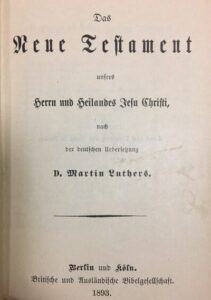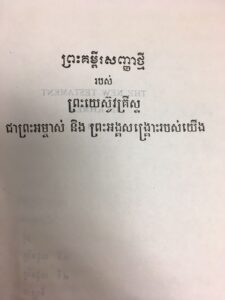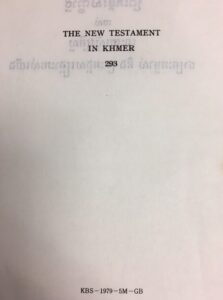
by Shan Martinez
Cataloging items for Special Collections is an adventure. This is because many of the items are indeed, special. They are unique, old, and sometimes in a language that the catalog librarian can not read. Never fear, this is not daunting in the slightest. The challenge begins!
First, the librarian examines the item in hand, and then proceeds through a few logical first steps. If the item is in English she is off to a quick start. Do we already have this item? Search our catalog carefully and compare the bibliographic record with the item. After confirming that we don’t have the item, then the search continues in WorldCat for a record. WorldCat is a database of information about library collections throughout the world. Librarians cooperatively contribute, enhance and share bibliographic data so that they don’t have to create a new record for every item in their library. They can use one that someone else has created and export it into their own catalog. One could search by ISBN. The first ISBN code was created in 1967, nonetheless, some books in the early seventies are missing that number, and some self-published books don’t have one either. When the ISBN is missing, a search by title and author usually leads to a list of records from which the correct record can be found. However, sometimes we find ourselves knee deep in records. Bibles, for example, can be trying. Think about it. The title “Holy Bible” often has a rather lengthy subtitle. For example, “The Holy Bible, authorized or King James version. Containing the Old and New Testament translated out of the original tongues and with the former translations diligently compared and revised.” The wording of these titles varies from Bible to Bible, but they are still long. Then add to that the many publishers, page numbers, red letter versions, sizes etc. There are a lot of details to check off. Eventually, the librarian will narrow down the best record by verifying and carefully checking all the important descriptors. The call number will be assigned and that Bible is cataloged.

But, what if, the Bible is in another language? Some Bibles in other languages have plenty of publishing information printed in English on the verso. The records for these Bibles are fairly easy to find. Recently, Special Collections received a large collection of Bibles from Carroll M. Gunderson. We have had a few challenges with some of them. For example, a German language Bible printed before 1941 may be printed in a hard-to-decipher font called Walbaum-Fraktur (1800).
The cataloger may need a magnifying glass for tiny font and an alphabet in this font to figure out and translate the needed information. Sometimes, the language does not use the Roman alphabet. If the language is Chinese, I would ask a Chinese colleague for help or perhaps a student. But, I don’t have access to people who can read every language. Sometimes the Bible does not include any English at all, and I don’t know anyone who reads the language.
One such New Testament was translated into the Cambodian language Khmer. The only reason that was initially known was a one-line statement printed in English on the verso: The New Testament in Khmer.


There was also a hyphenated line at the bottom of the page: KBS-1979-5M-GB. In searching WorldCat, The English phrase was used because if there was a record, this phrase would likely be included as a translated title. Sure enough, several records popped up. Now comes the narrowing down process. That hyphenated line gives some more clues. 1979 is the year of publication, and KBS might stand for Khmer Bible Society. The date narrows the record choices to two. One record had an approximate page number and the spine measurement was too small. Move on to the second 1979 record. This record included the English title on the verso, the spine measurement was correct, and the publisher looked right, although it was in Khmer. The page numbers were there, but in Khmer. A quick Google search found a chart with numbers in Khmer. After comparing the page number squiggles on the last page to the handy chart, the number of pages was confirmed and the record was selected. There is great satisfaction for a catalog librarian in successfully finding a record for an item in a language that she doesn’t read. This is one story in the great adventure of cataloging for Special Collections.
